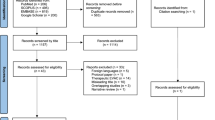Abstract
Perforations and leaks of the gastrointestinal tract are difficult to manage and are associated with high morbidity and mortality. Recently, endoscopic approaches have been applied with varying degrees of success. Most recently, the use of endoluminal vacuum therapy has been used with high success rates in decreasing both morbidity and mortality. Under an IRB-approved prospective registry that we started in July 2013, we have been using endoluminal vacuum therapy to treat a variety of leaks throughout the GI tract. The procedure uses an endosponge connected to a nasogastric tube that is endoscopically guided into a fistula cavity in order to facilitate healing, obtain source control, and aid in reperfusion of the adjacent tissue with debridement. Endoluminal vacuum therapy has been used on all patients in the registry. Overall success rate for healing the leak or fistula is 95% in the esophagus, 83% in the stomach, 100% in the small bowel, and 60% of colorectal cases. The purpose of this report is to review the history of endoluminal wound vacuum therapy, identify appropriate patient selection criteria, and highlight “pearls” of the procedure. This article is written in the context of our own clinical experience, with a primary focus on a “How I Do It” technical description.




Similar content being viewed by others
References
Shearer, R., et al., Have early postoperative complications from laparoscopic rectal cancer surgery improved over the past 20 years? Colorectal Dis, 2013. 15(10): p. 1211–26.
Biancari, F., et al., Current Treatment and Outcome of Esophageal Perforations in Adults: Systematic Review and Meta-Analysis of 75 Studies. World Journal of Surgery, 2013. 37(5): p. 1051–1059.
Juza, R.M., et al., Gastric sleeve leak: a single institution's experience with early combined laparoendoscopic management. Surg Obes Relat Dis, 2015. 11(1): p. 60–4.
Schaheen, L., S.H. Blackmon, and K.S. Nason, Optimal approach to the management of intrathoracic esophageal leak following esophagectomy: a systematic review. Am J Surg, 2014. 208(4): p. 536–43.
Markar, S.R., et al., Technical factors that affect anastomotic integrity following esophagectomy: systematic review and meta-analysis. Ann Surg Oncol, 2013. 20(13): p. 4274–81.
Rajan, P.S., et al., Role of endoscopic stents and selective minimal access drainage in oesophageal leaks: feasibility and outcome. Surg Endosc, 2014. 28(8): p. 2368–73.
Persson, S., et al., Predictors for failure of stent treatment for benign esophageal perforations - a single center 10-year experience. World Journal Of Gastroenterology: WJG, 2014. 20(30): p. 10613–10619.
Dasari, B.V.M., et al., The role of esophageal stents in the management of esophageal anastomotic leaks and benign esophageal perforations. Annals Of Surgery, 2014. 259(5): p. 852–860.
Lee, S., et al., Clinical outcomes of endoscopic and surgical management for postoperative upper gastrointestinal leakage. Surg Endosc, 2013. 27(11): p. 4232–40.
van Boeckel, P.G., et al., Systematic review: temporary stent placement for benign rupture or anastomotic leak of the oesophagus. Aliment Pharmacol Ther, 2011. 33(12): p. 1292–301.
Kirschniak, A., et al., The Over-The-Scope Clip (OTSC) for the treatment of gastrointestinal bleeding, perforations, and fistulas. Surg Endosc, 2011. 25(9): p. 2901–5.
Jacobsen, G.R., et al., Initial experience with an innovative endoscopic clipping system. Surg Technol Int, 2012. 22: p. 39–43.
Wedemeyer, J., et al., Endoscopic vacuum-assisted closure of upper intestinal anastomotic leaks. Gastrointest Endosc, 2008. 67(4): p. 708–11.
Weidenhagen, R., et al., Endoscopic vacuum-assisted closure of anastomotic leakage following anterior resection of the rectum: a new method. Surg Endosc, 2008. 22(8): p. 1818–25.
Brangewitz, M., et al., Endoscopic closure of esophageal intrathoracic leaks: stent versus endoscopic vacuum-assisted closure, a retrospective analysis. Endoscopy, 2013. 45(6): p. 433–438.
Bludau, M., et al., Management of upper intestinal leaks using an endoscopic vacuum-assisted closure system (E-VAC). Surg Endosc, 2014. 28(3): p. 896–901.
Smallwood, N.R., et al., The use of endoluminal vacuum (E-Vac) therapy in the management of upper gastrointestinal leaks and perforations. Surg Endosc, 2015.
Mencio, M.A., et al., Use of a novel technique to manage gastrointestinal leaks with endoluminal negative pressure: a single institution experience. Surg Endosc, 2018.
Bludau, M., et al., Results of endoscopic vacuum-assisted closure device for treatment of upper GI leaks. Surg Endosc, 2018. 32(4): p. 1906–1914.
Szymanski, K. and E. Ontiveros, Endolumenal Vacuum Therapy and Fistulojejunostomy in the Management of Sleeve Gastrectomy Staple Line Leaks. 2018. 2018: p. 2494069.
Author information
Authors and Affiliations
Contributions
The authors have participated in the drafting of this manuscript and take responsibility for its content. Each author has substantially contributed to the concept, acquisition of data, and presentation. Each author has participated in the revising process of the manuscript as well as its final approval. All agree to be accountable for all aspects of the manuscript.
Corresponding author
Additional information
Publisher’s note
Springer Nature remains neutral with regard to jurisdictional claims in published maps and institutional affiliations.
Rights and permissions
About this article
Cite this article
Leeds, S.G., Mencio, M., Ontiveros, E. et al. Endoluminal Vacuum Therapy: How I Do It. J Gastrointest Surg 23, 1037–1043 (2019). https://doi.org/10.1007/s11605-018-04082-z
Received:
Accepted:
Published:
Issue Date:
DOI: https://doi.org/10.1007/s11605-018-04082-z




